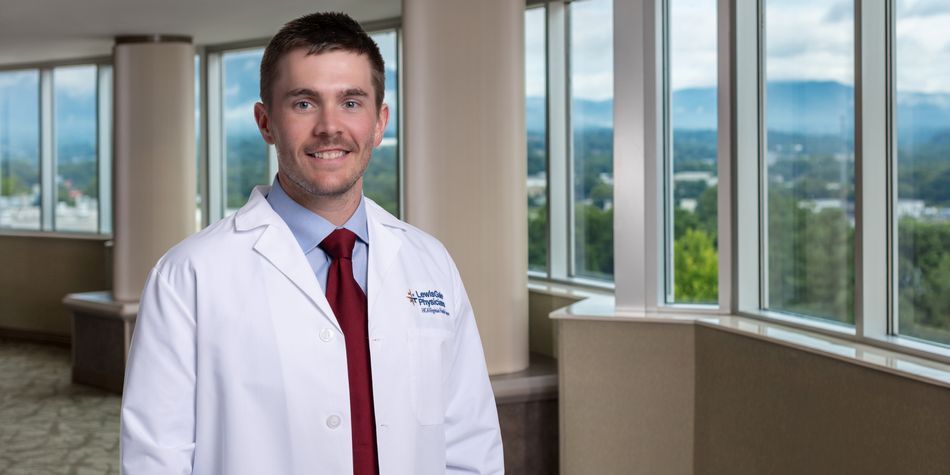
Dr. Joseph Conduff is a board-eligible otolaryngologist (ENT) with LewisGale Physicians in Blacksburg, Virginia. He is an expert in a wide range of conditions related to the ear, nose, and throat, including the diagnosis and treatment of deviated nasal septums.
What is a deviated septum?
The nasal septum is the thin wall of cartilage and bone that separates the two sides of the nasal passage. A deviated septum occurs when this wall moves off-center, making one chamber larger than the other. Not all deviated septums require treatment, but severe cases may cause difficulty breathing through the nose, nasal drainage, post-nasal drip, and can contribute to eustachian tube dysfunction.
What causes a deviated septum?
Some deviated septums are congenital, meaning they are present at birth. Others develop during normal growth, but many are caused by an injury to the nose while playing sports or in an accident. According to the American Academy of Otolaryngology – Head and Neck Surgery, up to 80 percent of the world’s population have some degree of nasal passage deformity.
To help avoid a deviated septum, always wear protective gear when playing sports and wear a seatbelt in the car.
Symptoms
Some deviated septums have no symptoms, and some people are not even aware that they have an uneven nasal passage. When symptoms do exist, they may include:
- Blockage of one or both nostrils, making it more difficult to breathe, especially during exercise
- Loud breathing or snoring during sleep
- Nosebleeds caused by a dry nasal septum from airflow disturbance in the nasal cavity
- Preference for sleeping on one side when one chamber of the nasal passage is narrower than the other
- Facial pain
- Headaches
- Eustachian tube dysfunction (ear pain, pressure, popping sensation in ears)
- Unusual awareness of the breathing cycle
- CPAP intolerance for patients with diagnosed sleep apnea due to poor nasal airflow
When should I seek treatment?
Patients should seek treatment if they experience frequent nosebleeds, increased difficulty breathing through the nose (especially on one side only), excessive post-nasal drip, or frequent sinus infections. Using a nasal speculum and a headlight, a primary care physician or an otolaryngologist can examine the inside of the nasal passage to see if a deviated septum exists and the extent to which the nasal passage may be obstructed. Sometimes, in-office nasal endoscopy can also help identify the source of the problem.
Deviated septums that have no symptoms or only mild symptoms do not require treatment.
Treatment options
Medical therapy should always be first line treatment for nasal airway obstruction secondary to a deviated septum. While some patients can be managed with primary medical therapy, surgical treatment is still a mainstay of care for severe nasal obstruction caused by a deviated septum who have failed proper medical therapy.
Medication
Medical therapy for nasal obstruction aims to decrease inflammation in the nose. These medications include:
- Oral Antihistamines (Loratadine, cetirizine, levocetirizine, fexofenadine etc.)
- Nasal saline sprays
- Nasal steroid sprays (Fluticasone, mometasone, triamcinolone etc.)
- Nasal antihistamine sprays (Azelastine)
Structural treatments
Some patients have specific anatomic nasal abnormalities that can be treated with external support. These include breathe-right strips and nasal cones (also known as nasal dilators).
Septoplasty
If the deviation is more severe and does not respond to non-surgical treatment, an outpatient surgical procedure called a septoplasty and turbinate reduction is recommended to straighten the septum and open the nasal airway. In most cases general anesthesia is utilized, and the procedure typically takes between 60 to 90 minutes. During this corrective procedure, the septum is restructured either by adding or removing bone or cartilage and repositioning it in the center of the nose. The mucous membrane that covers the septum is then put back into place with stitches or splints. Patients usually go home the same day. Sometimes, splints are left in place to help the septum heal in the correct position. They are typically removed in the office in about a week after surgery.
Most people show no outward sign of septoplasty and turbinate surgery since there are no external incisions and this procedure does not alter the overall shape of the nose. Most patients experience some mild discomfort near the front of their nose, congestion resulting from mild swelling, or nasal drainage. If necessary, septoplasty may be combined with sinus surgery for patients who also struggle with frequent sinus infections or rhinoplasty, a procedure called septorhinoplasty, to change the outward appearance of the nose and provide optimal breathing. Because children and adolescents are still growing, septoplasty usually is reserved for adults, but select cases of adolescents may be candidates for septoplasty and turbinate surgery.
For more information or to schedule an appointment with Dr. Conduff, call (540) 443-7400.